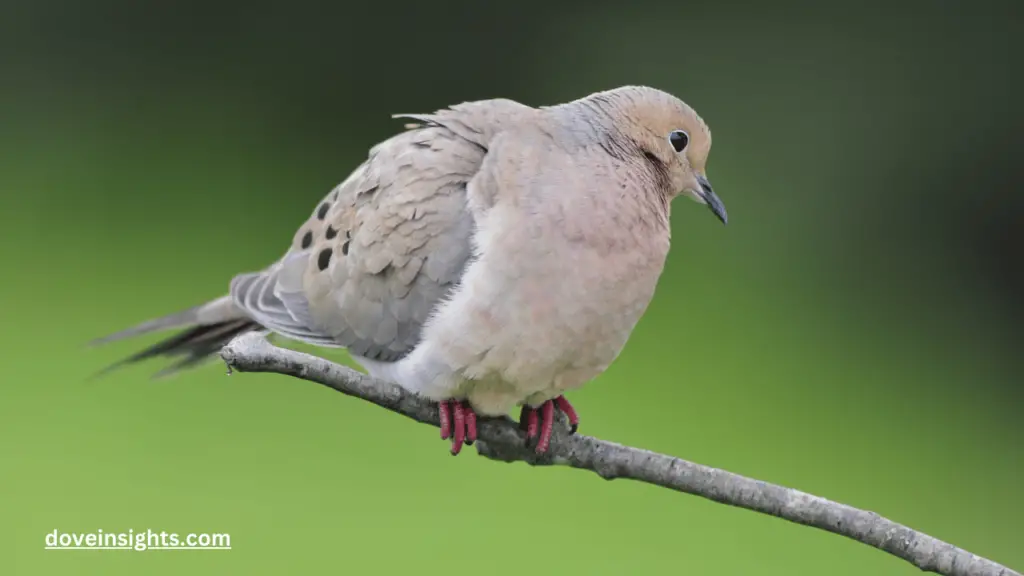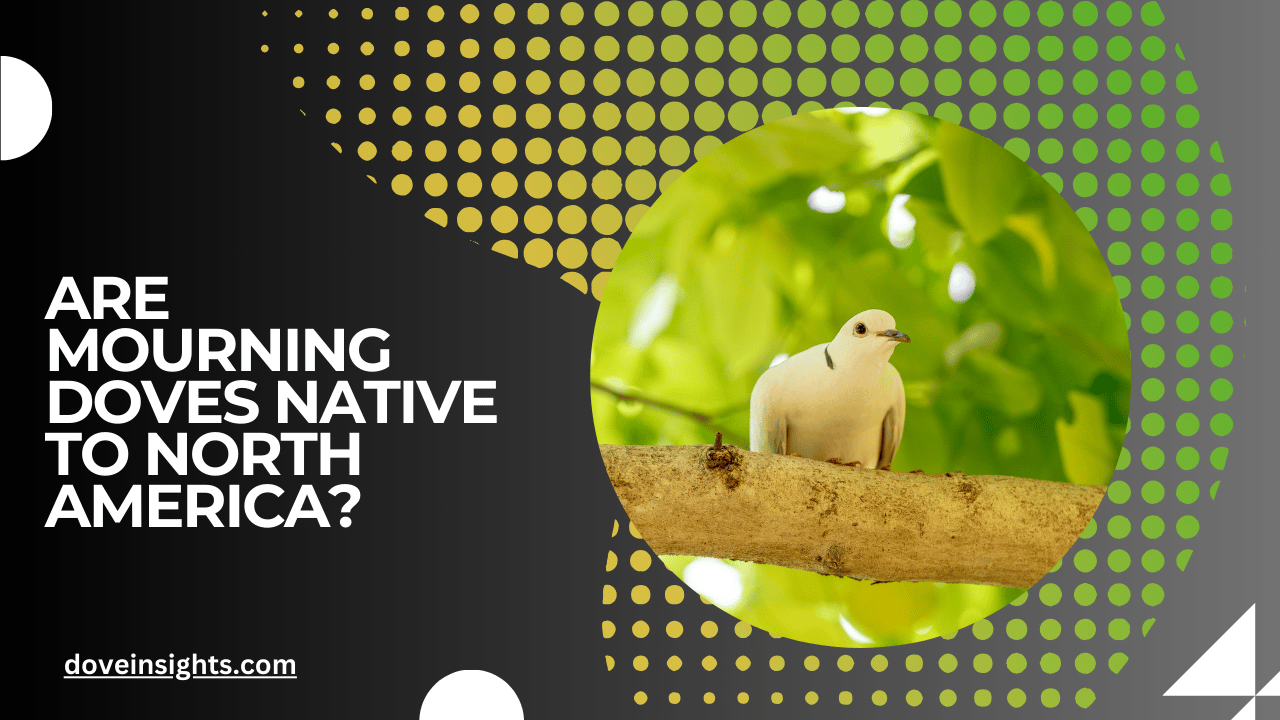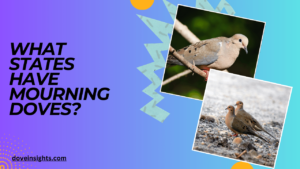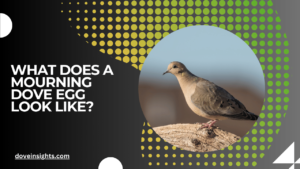The gentle coo of a mourning dove is a sound that many of us associate with the serene moments of spring and summer, as these birds flutter through the skies.
Often seen perched on telephone wires or gracefully gliding across open fields, the mourning dove holds a special place in our hearts. But have you ever stopped to wonder: are mourning doves native to North America?
How did these birds come to symbolize peace and tranquility across the continent, and why are they so deeply ingrained in the landscapes of the United States, Canada, and beyond?
While mourning doves are now widespread throughout North America, their journey to becoming such a ubiquitous presence is rooted in their history and evolution.
This article delves into the intriguing question of whether mourning doves are truly native to this region, exploring their origins, migration patterns, and how they have adapted to thrive in diverse environments.
Understanding their history is not just about knowing where they came from but also about appreciating the vital role they play in our ecosystems today.
The mourning dove is one of North America’s most iconic birds, but its relationship with this vast continent is more complex than it might initially appear.
By examining its evolution, migration habits, and expansion over time, this article will provide you with a deep understanding of whether mourning doves are truly native to North America and how they became such an integral part of the landscape.
Contents
- 1 The Mourning Dove’s Origin – Where Do They Come From?
- 2 The Mourning Dove’s Expansion Across North America
- 3 Are Mourning Doves Considered “Native” in All Parts of North America?
- 4 The Role of Mourning Doves in North American Ecosystems
- 5 The Current Status of Mourning Doves in North America
- 6 Conclusion:
- 7 FAQ’s
- 7.0.1 Are mourning doves native to North America?
- 7.0.2 Where did mourning doves originate?
- 7.0.3 Are mourning doves found in all parts of North America?
- 7.0.4 Why are mourning doves important to North American ecosystems?
- 7.0.5 Do mourning doves migrate?
- 7.0.6 How have mourning doves adapted to human development?
The Mourning Dove’s Origin – Where Do They Come From?
Mourning doves (Zenaida macroura) belong to the dove and pigeon family (Columbidae), a group that has a long evolutionary history. These birds are often associated with the Americas, but what is their true origin?
To understand whether they are native to North America, it’s essential to look at their evolutionary history and migration patterns.
Research suggests that mourning doves evolved in the Americas, making them truly native to the continent.
These birds are believed to have originated in Central America and spread over time into North America, primarily due to favorable environmental conditions. Fossil records indicate that mourning doves have been present in North America for thousands of years, long before the arrival of European settlers.
However, they have adapted remarkably well to different environments, expanding their range further as agricultural development and human settlements provided new habitats.
Although mourning doves are now found across much of North America, their evolutionary roots suggest that they are indeed native to the continent. This is a key distinction that sets them apart from other birds that may have been introduced to the region over time.
The Mourning Dove’s Expansion Across North America
Over the centuries, mourning doves have spread throughout North America due to favorable living conditions and successful adaptation to changing landscapes.
While their origin lies in Central America, they have migrated and settled across a vast range, from the southern United States to Canada.
Mourning doves are highly adaptable birds, capable of living in a wide range of environments, from forests and woodlands to urban areas and farmlands. Their ability to thrive in different habitats has allowed them to expand their range significantly.
As human populations grew, the development of agriculture provided ample food sources and nesting sites, contributing to the mourning dove’s steady rise in population.
Today, mourning doves are found in every U.S. state except for parts of Alaska and the most northern regions of Canada.
Their migratory behavior, which involves moving between southern and northern regions depending on the season, has further facilitated their widespread presence across the continent.
Are Mourning Doves Considered “Native” in All Parts of North America?
While mourning doves are native to much of North America, their presence in certain regions has sparked some debate.
Are they truly indigenous to every corner of the continent, or did their range expansion only begin after European colonization?
Historically, mourning doves were found primarily in the southwestern U.S. and parts of Mexico. Over time, as agricultural practices flourished and the human population spread, the mourning dove began migrating northward, eventually reaching parts of Canada.
In this sense, the mourning dove can be considered native to North America as a whole, but their range expansion was significantly influenced by human activities.
In certain northern regions of Canada and Alaska, mourning doves are considered migrants rather than permanent residents, as their populations are more seasonal.
However, as their numbers continue to grow, many of these areas are now home to year-round mourning dove populations, showing just how much they have become embedded in the continent’s ecosystems.
The Role of Mourning Doves in North American Ecosystems
Mourning doves have played an essential role in the ecosystems of North America for centuries. As seed dispersers, they contribute to the growth of various plant species by spreading seeds from the grasses and berries they consume.
This helps maintain the balance of local plant life and supports a diverse array of animal species.
Additionally, mourning doves are an important food source for predators, including hawks, falcons, and snakes. Their presence in ecosystems helps support the food chain, and their role as prey species is vital in maintaining the health of other wildlife populations.
Beyond their ecological importance, mourning doves also play a significant role in cultural and spiritual practices across North America.
For many Indigenous groups, mourning doves represent peace and reconciliation, symbolizing the cycles of life and death. Their widespread presence has made them an important part of cultural traditions and spiritual symbolism.
The Current Status of Mourning Doves in North America

Today, mourning doves are one of the most abundant and widely recognized bird species in North America. Their population is stable, and they are found across both rural and urban landscapes. Despite facing some challenges due to habitat loss and climate change, mourning doves continue to thrive across the continent.
The migratory bird treaty between the United States, Canada, and Mexico ensures that mourning doves are protected and managed responsibly to maintain their population levels. They are an essential species in North America’s wildlife community, providing ecological benefits while contributing to the cultural fabric of the continent.
Despite their status as a native species, mourning doves face environmental pressures.
Urbanization, agricultural development, and changing climate patterns can impact their migration habits and nesting conditions. However, their ability to adapt to new environments has allowed them to remain resilient and widespread.
Conclusion:
Mourning doves are truly native to North America, with deep historical roots in the continent’s ecosystems.
From their origin in Central America to their widespread presence in the United States and Canada, mourning doves have become an iconic symbol of peace, tranquility, and adaptability.
Their migration patterns, ability to thrive in diverse environments, and crucial role in ecosystems make them an integral part of the North American landscape.
While mourning doves may have initially started in the southwestern United States and Central America, their expansion across the continent has made them one of the most recognized bird species in North America today.
As native birds, they have become an essential part of both the natural environment and the cultural identity of the region.
Understanding the native status of mourning doves not only deepens our appreciation for these birds but also highlights the complex relationships between species and their habitats. Mourning doves continue to inspire awe, remind us of the beauty of nature, and serve as a testament to the power of adaptation and survival.
FAQ’s
Are mourning doves native to North America?
Yes, mourning doves are native to North America, with their origin in Central America. Over time, they have spread throughout the continent, adapting to a wide range of habitats.
Where did mourning doves originate?
Mourning doves are believed to have originated in Central America and gradually migrated into North America, expanding their range as agricultural practices created new habitats.
Are mourning doves found in all parts of North America?
Mourning doves are found in most parts of North America, but their range is more limited in northern regions like Alaska and Canada, where they are typically migrants rather than permanent residents.
Why are mourning doves important to North American ecosystems?
Mourning doves contribute to the ecosystem by dispersing seeds, supporting plant growth, and serving as prey for predators, thus maintaining the balance of local ecosystems.
Do mourning doves migrate?
Yes, mourning doves are migratory birds, traveling between northern breeding grounds and southern wintering areas, with some populations staying year-round in milder climates.
How have mourning doves adapted to human development?
Mourning doves have adapted well to human development, thriving in urban areas and farmlands. Their ability to adapt to diverse habitats has contributed to their widespread presence across the continent.








